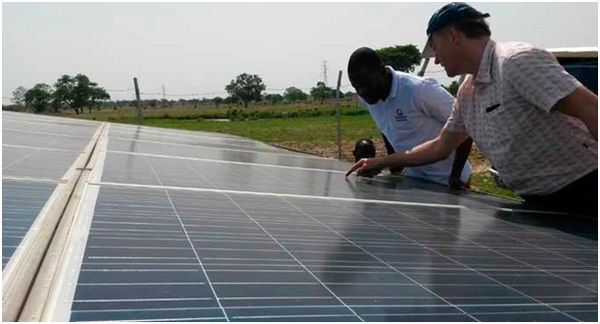Knowledge fuels change
For over a decade, Energypedia has shared free, reliable energy expertise with the world.
We’re now facing a serious funding gap.
Help keep this platform alive — your donation, big or small, truly matters!
Thank you for your support
SPIS Toolbox - Implement Maintenance Routines
Implement Maintenance Routines
</div>
Once the maintenance plan is in place and the responsible persons identified, the maintenance should become a routine.
Critical regular maintenance activities are:
1. Check daily if the system is working. If the pump is not working:
- check the water source and pipes (any dirt, blockage, enoughwater?);
- check theelectronics (any burned parts, loose wires, emergency lights?).
2. Inspect the system once a week with respect to:
- energy generated by PVsystem;
- pump performance (pumpingrate);
- condition of water source (purity of water);
- condition of controller and electronics (visible signs ofmalfunctioning);
- blockage of drip emitters;
- condition of water storage facility and pipes (leaks, waterlevel);
- condition of solar panels and their mounting system (stability, cleanness).
3. Clean solar panels every two to four weeks:
- clean water and a little scrubbing with a cloth covered sponge or soft brush should remove the most persistent grime;
- clean in the early morning or late evening, when panels are cool;
- do not step or walk on the panels as they could be damaged.
Note: Hot panels should not be sprayed with cold water – they might crack!
4. Throughout the year (every two to three months)the PV system should be checked thoroughly so that:
- no plants grow close to the panel, the mounting structure, water source, controller, junction box, etc.;
- there is no shade on the panels (plants, poles, fences etc.), so as to permit maximum radiation;
- the fencing of the solar array is not damaged;
- the mounting structures are stable.
In addition, the reservoir should be cleaned and the irrigation system should be flushed regularly.
Note: Inspect your system always after strong winds, hail storms, lightening or earth quakes have occurred in your region.
After the first experience with a particular maintenance plan, the timing and frequency of maintenance can be adapted to suit the local conditions and capacities of the producer.
Note: Call your technology provider (panels, pumping, and controller) or electrician (electronics) who installed the system for help – this should be part of the service contract.
Outcome / product
- Maintenance plan;
- maintenance sheets;
- checklist for visits to farm;
- weekly inspection sheet;
- bi-monthly inspection sheet;
- MAINTAIN 01-Maintenance Checklist.
People / Stakeholders
- Producers /producer groups;
- agricultural advisors;
- technology and service providers (electricians, companies providing solar powered systems).
Important issues& Decisions
- Maintaining an SPIS does not require advanced technical skills and the overall effort is relatively low, when compared to other technologies.
- It is important to establish inspection and maintenance routines and to schedule them as part of the work plan of the farm.




















